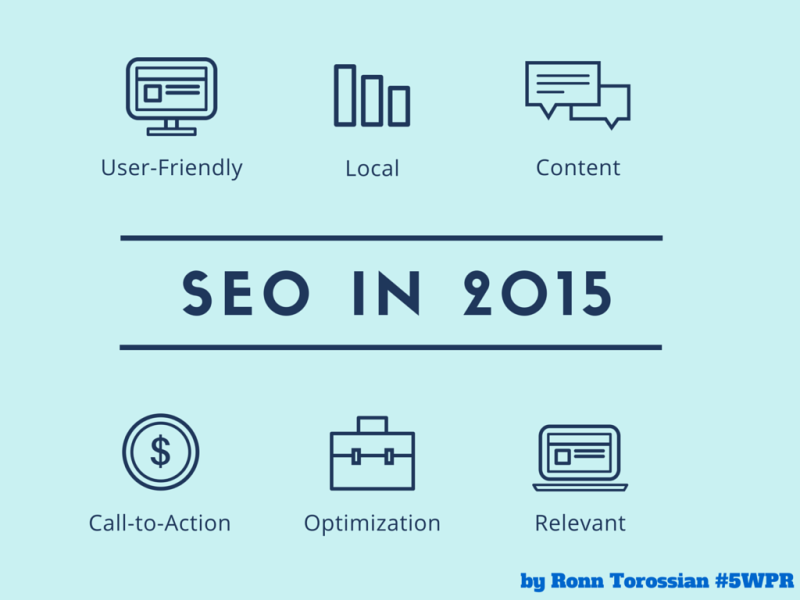
Google and other search engines are constantly changing their algorithms, forcing public relations and SEO professionals to revamp strategies. 2015 is no exception! Google, which usually leads the pack in new SEO changes, recently rolled out a new list of challenges and changes. Here are four SEO factors that PR pros need to look out for.
Embrace User-Friendliness
Search engine crawlers are putting an increasing amount of emphasis on user-friendliness, mainly in the categories of mobile-friendliness and page loading speed. This is done in response to the way modern people use Google and other search engines. An increasing number of people are browsing and searching from their smartphone or other device. They are likely to be frustrated if offered results that include links they cannot access. Similarly, the days of dial up are over. People do not want to spend a lot of time waiting for a page to load.
One important way to make a site more mobile-friendly is to include a viewport metatag in the HTML code. Web browsers assume the user is on a standard computer screen unless instructed otherwise. A viewport metatag tells them to wrap text and otherwise accommodate a smaller screen. Google bots are looking for details such as these in web design. This also keeps text at a readable size on a mobile screen without having to zoom in.
Public relations professionals are experts at dealing with the public and making it easy for people to access information, so most already have mobile-friendly, fast-loading sites. However, it’s good to remember that this will have an even greater effect as of April 2015.
Go Local
Local shopping is more important to consumers, so it is getting more attention from Google as well. This makes sense when you consider that most people turn to a search engine rather than the Yellow Pages. Thus, websites must be optimized for their local area in order to have a high ranking and a favorable placement in results.
It is important to claim and maximize your Google+ and other social media accounts. It is also crucial to get customers and colleagues to review one’s business. Highly rated businesses with claimed and complete social networking accounts will soon begin appearing first in Google results. That five star rating is no longer a sign of customer satisfaction, but a major factor in search engine optimization. This will benefit public relations professionals and other pros who know how to massage public opinion.
Content Is Key
Content has become an important part of search engine optimization, but it is being given an increasing amount of weight as engineers learn what to look for. The days of keyword stuffing are over. While it is still important to include keywords in titles, image tags, and content, organic usage is now being more reliably measured by crawlers. The result is that writing for your audience and writing for search engines are no longer mutually exclusive. Write content that will interest and inform your audience, and the search engine rankings will follow.
However, there are a few purely SEO factors that PR pros still have to keep in mind when optimizing a page. The most important one is to speak Google’s language, namely HTML. It’s okay to have some images and other aspects that make your website more visually appealing, but it’s important to keep Flash and other uncrawled languages to a minimum.
Avoid Over-Optimization
Once upon a time, there was no such thing as over-optimization. Those days are long over. It is important to investigate and determine a perfect keyword density and then stick to it. Anything more will make search engine crawlers flag you as a potential spammer, sending your site to page 9000 of search results Relovernight.
It is equally important to consider your inbound links when looking for over-optimization. Spammy links have never brought relevant traffic, but they used to have a purpose. Increasingly, having a listing on a page dedicated to links may have a negative effect. Seek high quality links from high quality sites; even one of these is worth more than a single spam link. Spam links have never been a good PR move, so this is another area where Google bots are beginning to mirror user behavior more accurately. Both your target audience and Google will search your website by the caliber of the websites recommending it.
While major search engines are changing their algorithms, these changes are actually very common sense when you consider changes in public search behavior. These changes will make it easier for legitimate websites with a heavy local presence and legitimately relevant content to get the high PageRank and search engine listings that they need. While some search engine optimization is still needed, optimizing your page now leads to a better user experience and more relevant traffic.